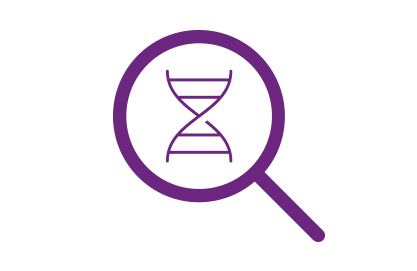References:
1. Verhagen J, Smith EL, Whettlock EM, Macintyre B, Peakman M. Proinsulin-mediated induction of type 1 diabetes in HLA-DR4-transgenic mice. Sci Rep. 2018 Sep 20;8(1):14106. doi: 10.1038/s41598-018-32546-4. PMID: 30237494; PMCID: PMC6148278.
2. Ito K, Bian HJ, Molina M, Han J, Magram J, Saar E, Belunis C, Bolin DR, Arceo R, Campbell R, Falcioni F, Vidović D, Hammer J, Nagy ZA. HLA-DR4-IE chimeric class II transgenic, murine class II-deficient mice are susceptible to experimental allergic encephalomyelitis. J Exp Med. 1996 Jun 1;183(6):2635-44. doi: 10.1084/jem.183.6.2635. PMID: 8676084; PMCID: PMC2192625.
3. Lim JJ, Jones CM, Loh TJ, Ting YT, Zareie P, Loh KL, Felix NJ, Suri A, McKinnon M, Stevenaert F, Sharma RK, Klareskog L, Malmström V, Baker DG, Purcell AW, Reid HH, La Gruta NL, Rossjohn J. The shared susceptibility epitope of HLA-DR4 binds citrullinated self-antigens and the TCR. Sci Immunol. 2021 Apr 16;6(58):eabe0896. doi: 10.1126/sciimmunol.abe0896. PMID: 33863750.
4. Hill JA, Bell DA, Brintnell W, Yue D, Wehrli B, Jevnikar AM, Lee DM, Hueber W, Robinson WH, Cairns E. Arthritis induced by posttranslationally modified (citrullinated) fibrinogen in DR4-IE transgenic mice. J Exp Med. 2008 Apr 14;205(4):967-79. doi: 10.1084/jem.20072051. Epub 2008 Apr 7. PMID: 18391064; PMCID: PMC2292232.
5. Kievits F, Ivanyi P, Krimpenfort P, Berns A, Ploegh HL. HLA-restricted recognition of viral antigens in HLA transgenic mice. Nature. 1987 Oct 1-7;329(6138):447-9. doi: 10.1038/329447a0. PMID: 2821399.
6. Le AX, Bernhard EJ, Holterman MJ, Strub S, Parham P, Lacy E, Engelhard VH. Cytotoxic T cell responses in HLA-A2.1 transgenic mice. Recognition of HLA alloantigens and utilization of HLA-A2.1 as a restriction element. J Immunol. 1989 Feb 15;142(4):1366-71. PMID: 2464645.
7. Grusby MJ, Johnson RS, Papaioannou VE, Glimcher LH. (1991) Depletion of CD4+ T-Cells in Major Histocompatibility Complex Class II — Deficient Mice. Science, 253(5026):1417-1420.
8. Chitilian HV, Auchincloss H Jr. Studies of transplantation immunology with major histocompatibility complex knockout mice. J Heart Lung Transplant. 1997 Feb;16(2):153-9. PMID: 9059926.
9. Pajot A, Pancré V, Fazilleau N, Michel ML, Angyalosi G, Ojcius DM, Auriault C, Lemonnier FA, Lone YC. Comparison of HLA-DR1-restricted T cell response induced in HLA-DR1 transgenic mice deficient for murine MHC class II and HLA-DR1 transgenic mice expressing endogenous murine MHC class II molecules. Int Immunol. 2004 Sep;16(9):1275-82. PMID: 15249541.
10. DiPiazza A, Richards K, Poulton N, Sant AJ. Avian and Human Seasonal Influenza Hemagglutinin Proteins Elicit CD4 T Cell Responses That Are Comparable in Epitope Abundance and Diversity. Clin Vaccine Immunol. 2017 Mar 6;24(3):e00548-16. doi: 10.1128/CVI.00548-16. PMID: 28100497; PMCID: PMC5339641.
 Key Takeaways
Key Takeaways















.jpg)

.jpg)
.jpg)
.jpg)
.jpg)





.jpg)


.jpg)
.jpg)




.jpg)




.jpg)

.jpg)





